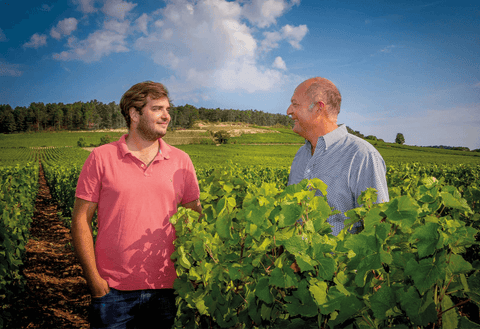
For seven generations, Domaine Henri Delagrange has drawn the essence of its wines and of its history from two famous terroirs of the Côte de Beaune: Volnay and Pommard.
Its flagship appellation, le Clos des Chênes, is testimony to the family’s passion and know-how for the great red wines of the Côte de Beaune.
The winery, located just below Volnay, is where the vinification and maturation processes of their white wines takes place. The tasting cellar provides a unique spotlight on the greatest Volnay appellations.
The historic cellar of the estate, nestled at the heart of the village, is where the red wines are produced, and it houses the emblematic bottles that are steeped in history, the oldest of which dates back to 1945.

The pretty village of Volnay is perched high on the hillside, as befits a place whose wines have long been reputed as the finest of the Côte de Beaune. Volnay is old and the names of several vineyards have remained unchanged for 700 years. The Delagrange coat of arms dates back to 1570 and the family has been vineyard owners from that time forward.
With age comes experience and the extremely affable Didier, son of Henri, understands his region right down to the individual vine. The border between the villages of Volnay and Pommard, where a good part of the domaine’s vines are situated, is perhaps one of the most interesting geological contrasts in all of Burgundy. Here, the slopes of Volnay produce Pinot Noir that is lacy, delicate and fragrant. A few hundred feet away, where the slopes flatten out, the soil of Pommard gives the same grape variety muscle and concentration.

Didier owns 14 hectares of vines in the communes of Volnay, Pommard, Aloxe- Corton, Meursault and Haute-Côtes de Beaune. Didier can boast some of the best plots located right in the centre of Volnay.
The philosophy he has embraced is simple: hard work by hand in the vineyard and minimal intervention in the cellar. He ploughs rather than sprays and uses only organic vine and soil treatments, de-buds to limit yields, defoliates by hand to prevent rot and harvests manually.
In the cellar he uses new oak only sparingly, with 30% whole-bunch ferments in the reds. Didier’s main focus is to make wines that have precise aromatics followed by a pure core of classic Burgundian fruit.




















































